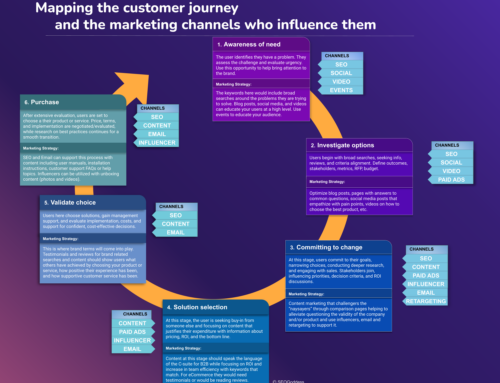The first Google Penguin algorithm update was unveiled in early 2012. The update represented Google’s first attempt to filter out strategies to manipulate its search engine results. Today, Google continues to tweak and update the Penguin algorithm to better refine search engine results for it’s users. The next Penguin algorithm is set to deploy before the end of 2015 according to sources from within Google itself.
It’s time to prepare your site for the next Penguin update and enter 2016 with a strong online presence and higher search engine rankings.
Understanding Penguin: Refreshes Versus Updates
Penguin has released many updates and refreshes since the initial launch in 2012. There is a tangible difference between a Penguin update and a refresh, however. This is important to understand since the pending late-2015 change will be a full update, not a simple refresh.
– Refresh: A simple re-launch of the existing Penguin algorithm.
– Update: New signals are added into the Penguin algorithm.
The upcoming update will not only be a real bona fide update, but it will be launched in real time, meaning it will begin to have a measurable effect on online content immediately.
Pros & Cons: How the New Penguin Update May Affect Your Site
One of the characteristics of Google’s Penguin algorithm to date is that each refresh and update introduces further refinements into how the algorithm sifts through search engine queries to find the highest quality results.
This pending late-2015 update is the most refined update yet, which means that even if your site has not been caught and filtered out by previous Penguin algorithm updates, you could still be at risk with this new update.
But there is an upside that comes along with each update as well. If in the past your site has been caught and filtered out of browser results due to bad links, thin content, excessive keywords, spam links or other big Google algorithm no-nos and you have since corrected these issues, you may find you have a fresh new chance to be re-included and even re-ranked at a higher level with the new Penguin update!
How You Can Prepare Your Site NOW
It has been a full year since the last Penguin algorithm update (made in December 2014). So hopefully if you were impacted by that update, you have since remedied some of the issues (or built on your site’s strengths).
While Google hasn’t yet revealed any specific details about exactly what the new update will target, it is fairly safe to bet that spam links and referring pages will be included. Since IT professionals can spend their entire careers working on just these issues, and you likely have plenty of other hats you are wearing besides webmaster, here is a terminology cheat sheet with some to-do items to help you check your site and ready it for the next update.
Terms You Need to Know:
– Spam links: These are links that lead to or from sites that have been identified by Google’s algorithm as spam-based.
– Referring pages: These are sites that link back to your site (whether you have given your permission for them to do so or not).
– Disavowed links: These are links you have registered with Google as ones you have either purchased or cannot delete yourself that you don’t want the algorithm to consider when ranking your site in browser results.
– Thin content: Thin content can be thought of as low information value content. When users submit browser queries, they are seeking useful information to answer a question, solve a problem, make a decision or make a purchase. The more useful the information on a web page, the higher the ranking in Google’s algorithm. The reverse also holds true – if a page is deemed to have low or no information value, it will be ranked low in results or even filtered out entirely.
To-Do tasks to complete pre-update:
– Analyze your backlinks and anchor text: Google has a free suite of Webmaster Tools that can help you analyze where your web pages rank in search engine results and how closely your anchor text (the end part of your website URL for each page) matches exact keyword sets that are commonly used to search for information in your topic. Here, you are aiming for a close match but NOT an exact match (which Google’s Penguin algorithm may interpret as attempting to “work their system” and artificially boost your rankings).
– Look at your site’s Google Analytics: Here you want to know how long the average visitor stays on your site, how many pages s/he visits and how long s/he remains on each page. This will give you more information about whether your pages are sufficiently information-rich to avoid Google’s thin content filters.
By preparing now for Google’s pending Penguin update, you will strengthen your site’s ability to generate new prospects and bring in more business regardless of what that update entails. In fact, whether Google has an update scheduled or not, it is always a good idea to re-evaluate and analyze your site’s performance on at least an annual basis to ensure it is doing the best possible job to promote your business.
If you have any questions or need help with understanding whether or not your site will be affected by the new update contact us and we’ll get your site checked out.
One Comment
Leave A Comment
The Story of the SavetheBreakfastSandwich.com Website
The Starbucks Breakfast Sandwich In January of 2008, I was gainfully employed with one of the many technology corporations based in Redmond, WA (No it wasn't Microsoft). It was Concur Technologies, [...]
SEO Checklist – Focusing on Social Media
As some of you know I teach a beginner to advanced SEO Workshop. One of the most asked for items in my talk is the SEO Checklist I have developed just [...]
Building a Social Media Community
The staff at Jenn Mathews Consulting use a system for social media marketing called the A.L.I.V.E. system. A majority of our clients have created their Facebook page and Twitter account, but [...]












Yesssssssss